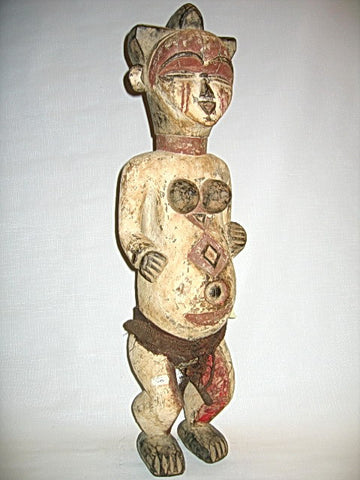ArtTribal.com
Punu Female Ancestor Figure
ArtTribal.com
Sold
The Punu reside on the left bank of the Upper Ngoume River (Gabon) and belong to the group of tribes known as Shira which were originally part of the Luango kingdom of Angola. With the Eshira, the Lumbo, the Vili, the Galoa, and the Vungu people, the Punu migrated northwards during the 18th century and settled in the area where they continue to inhabit to this day. They live in independent villages divided into clans and families, and social cohesion is ensured by a society known as moukouji. Its primary role is to regulate community life with regards to social and judicial matters, and mainly it applies itself to the neutralization of evil forces. To this end, officiates of moukoudji utilize a cult kit that includes statuettes, human relics and masks.
We do not see the Punu statues too often - masks are much more common. The stylized features of this sculpture are similar to Punu masks with characteristic "Asian" eyes, wide face, and very high-domed forehead, and characteristic rigid high coiffures reflecting the Punu women's hair styles.
This female ancestor figure is both sensual and dramatic and it possesses extra powers of protection. The dramatic effect is created by the contrasting chalk-white color of the body and the red accents on the forehead. The figure has an opening in its back where small ancestor figure is placed facing in the opposite direction to protect the clan. The ancestor figure is identical in style to the larger sculpture.
This sculpture has been in the Raskin Private Collection for over 20 years.
Product Details:
- Size: 26" x 8" x 7"
- Shipping: $50.00
- Material: Wood
- Quantity: Sorry, this product is not available
- SKU:

